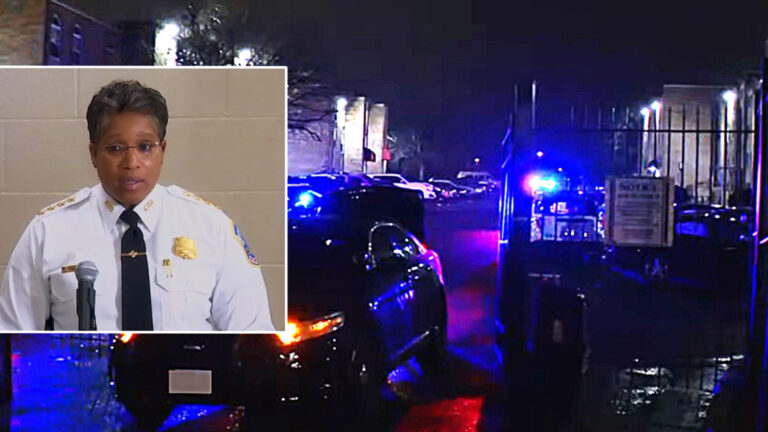New Revelations on American Airlines Crash: Possible Cause Behind Black Hawk Collision

Tragic Mid-Air Collision Claims 67 Lives
Authorities are continuing their deep dive into the cause of the American Airlines crash that occurred on January 29, 2024, near Ronald Reagan National Airport in Washington, D.C. The horrific accident involved a commercial airliner and a Black Hawk military helicopter, leading to an unimaginable loss of 67 lives.
The American Airlines jet, carrying 64 passengers and crew, was in its final approach when it tragically collided with the Black Hawk helicopter mid-air. The impact was devastating, immediately sending both aircraft into an uncontrollable descent toward the Potomac River. Despite emergency response efforts, there were no survivors.
Family members and loved ones of the victims were left in shock and grief, demanding answers as to how this collision could have happened. The accident has sparked intense discussions among aviation safety experts, lawmakers, and military officials, with growing concerns about communication failures and flight safety protocols in shared airspace.
📌 Read the NTSB’s latest aviation safety investigations
Search and Recovery Efforts
Following the collision, a massive emergency response was launched, with Coast Guard, fire departments, and law enforcement teams scrambling to locate potential survivors. Helicopters and boats were deployed across the Potomac River, hoping to rescue any passengers who may have survived the initial impact. However, as hours passed, it became clear that the crash was unsurvivable, and the search mission turned into a body recovery operation.

The cold January waters of the Potomac made recovery efforts even more challenging. Divers worked around the clock to retrieve wreckage and remains, facing dangerous conditions such as strong currents, debris, and low visibility. Wreckage from both aircraft was scattered over a wide area, making it difficult to piece together the full picture of what had transpired in the air.
Federal agencies, including the NTSB, FAA, and the Pentagon, were quickly involved in assessing the severity of the crash and its implications for airspace safety. Given that the incident involved a military aircraft, additional defense protocols were initiated to ensure no national security risks were involved.
📌 Learn how aviation accidents are investigated
New Findings from Investigators
On February 14, 2024, National Transportation Safety Board (NTSB) Chairman Jennifer Homendy provided a detailed update on the ongoing investigation. Her report suggested that critical altitude miscalculations may have played a role in the collision, raising serious safety concerns regarding military and civilian aircraft coordination.
Homendy revealed that early evidence suggests the Black Hawk’s crew may have been misinformed about their altitude at the time of the crash. If true, this could indicate instrument failure, misinterpretation of flight data, or human error, all of which are serious risk factors in aviation.
Investigators are carefully analyzing the flight data recorders (black boxes) recovered from both aircraft to determine what exactly was communicated between the pilots, air traffic control, and onboard systems. They are also looking at previous incidents where similar altitude misjudgments led to near-miss collisions or catastrophic crashes.
📌 Read about how black boxes help in crash investigations
Altitude Miscommunication: A Fatal Error?
One of the most alarming details uncovered by ABC News is the confusion between the Black Hawk pilots about their actual altitude. Reports indicate that:
- One believed they were at 400 feet.
- The other thought they were at 300 feet.
This 100-foot discrepancy is significant because in congested airspace near major airports, even a small miscalculation can result in a disastrous collision. Investigators are now questioning whether the helicopter’s onboard instruments were malfunctioning, or if there was a failure in reading and interpreting the data correctly.
Miscommunications like these have been linked to past aviation accidents, where pilots misjudged their altitude due to conflicting instrument readings. Some experts argue that advanced automation and AI-driven systems could help reduce such risks by providing pilots with real-time, highly accurate altitude data.
📌 Explore how aviation safety technology is evolving
Did Air Traffic Control Instructions Go Unheard?
Another critical factor being investigated is whether the Black Hawk crew actually received and acknowledged air traffic control (ATC) instructions.
Homendy pointed out a possible radio transmission failure, where the Black Hawk pilot may have transmitted at the exact same moment as ATC, effectively blocking out the instructions. If confirmed, this would highlight a major issue in military and civilian aviation coordination, where misheard or lost transmissions can lead to catastrophic consequences.
In busy airspaces like Washington, D.C., real-time voice communication is vital. Some aviation experts argue that back-up digital messaging systems should be implemented to ensure that all crucial flight instructions are received, even if voice channels fail.
📌 Read about ATC’s role in aviation safety
Was the ADS-B System Turned Off?
One of the most controversial aspects of the crash is the status of the Black Hawk’s Automatic Dependent Surveillance-Broadcast (ADS-B) system.
ADS-B is a critical tracking system used in modern aviation. It provides real-time location data to both air traffic controllers and nearby aircraft, significantly reducing the risk of mid-air collisions.
Texas Senator Ted Cruz raised concerns that the Black Hawk had its ADS-B system turned off, despite it being on a routine training mission.

Why Is ADS-B Important?
Unlike traditional radar-based tracking, ADS-B offers precise, up-to-the-second location data, allowing air traffic controllers and pilots to see exactly where aircraft are in real time. This vastly improves situational awareness and allows for safer air traffic management, especially in busy airspaces like Washington, D.C.
📌 Learn how ADS-B improves aviation safety
Social Media Reactions: Public Voices on the American Airlines Tragedy
As investigators continue to piece together the events leading to the fatal crash, social media has been flooded with discussions, with aviation experts, journalists, and everyday users sharing their thoughts, questions, and theories.
🔥 Here’s what people are saying about the American Airlines & Black Hawk crash on social media:
🚨 Twitter/X Discussion
✈️ Breaking: Investigators suggest faulty altitude data may have contributed to the tragic American Airlines and Black Hawk mid-air collision over the Potomac River. Was this avoidable? 🧐
💬 Join the conversation: Twitter/X Discussion
📢 Reddit Aviation Community
🚁 A deep dive into how military aircraft operate with ADS-B turned off and how this might have played a role in the Black Hawk collision with the American Airlines jet. Is it time to mandate ADS-B for military training missions?
📌 Reddit Thread: r/Aviation Discussion
📰 Facebook News & Aviation Groups
🗞️ New reports suggest ATC miscommunication could have played a role in the Washington, D.C. crash. Experts are debating whether secondary digital messaging should be mandatory for military pilots flying near major airports.
👉 Join the discussion: Facebook Aviation News
🎥 TikTok & YouTube Reactions
🎥 Experts are analyzing flight data and discussing the possible instrument failure that led to the fatal crash. Some believe the lack of ADS-B tracking was a crucial factor. What’s your take?
▶️ Watch the latest breakdowns:
- TikTok Aviation Breakdown: #AviationSafety
- YouTube Crash Analysis: Latest Crash Reports
The Role of Social Media in Aviation Investigations
Social media has played a crucial role in uncovering new details about the crash, providing a platform for pilots, experts, and concerned citizens to discuss aviation safety issues. While official investigations take time, platforms like Twitter, Reddit, and YouTube allow for real-time discussions and analysis.
Some aviation professionals have even suggested that authorities like the NTSB and FAA should monitor social media discussions for potential whistleblower insights or first-hand accounts that could assist in investigations.
📌 Follow the latest updates from the NTSB here: NTSB Official Twitter
What’s Next in the Investigation?
Authorities are now conducting an in-depth review of:
✔️ Whether faulty altitude data played a role
✔️ Potential ATC miscommunication before the impact
✔️ ADS-B system status and its impact on the crash
✔️ How such tragedies can be prevented in the future
Families of the victims, aviation experts, and lawmakers are eagerly awaiting further findings, hoping that this tragedy will lead to enhanced safety protocols and policy changes to prevent such disasters in the future.
📌 Follow the latest aviation news
Final Thoughts: A Tragedy That Calls for Change
The collision between American Airlines Flight 2476 and the Black Hawk helicopter highlights the urgent need for improved communication, better flight tracking technology, and stricter safety protocols.
As the NTSB continues its investigation, many are questioning whether changes to military aviation practices, such as requiring ADS-B for all non-combat flights, should be mandated.
What’s your take?
Should military aircraft always keep ADS-B activated? What other changes do you think should be made to prevent future crashes?
Join the discussion on Twitter, Facebook, and Reddit!
📌 Stay updated with the latest aviation safety news here.
Featured Image Credit: Chip Somodevilla/Getty






